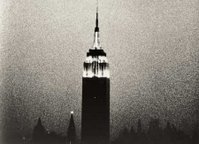
Short Cuts * Robert Altman * 1993
In this film, Robert Altman weaves together various Raymond Carver short stories (and one poem), linking them where they weren’t linked before. For example, the waitress in “They’re Not Your Husband” becomes the driver who hits the little boy with her car in “A Small Good Thing,” while the couple in “So Much Water So Close To Home” attends a dinner party with the couple in “Will You Please Be Quiet, Please?”, and so on. While Carver is one of my favorite short story writers, I’m not a purist; I understand that it’s necessary to change aspects of books when adapting them to the screen. However, I’m not sure that there’s any logic or purpose to the way in which the characters are linked. The film is, essentially, a portrayal of the everyday lives of a group of
Nashville, another Altman film that (more successfully, I think) involves a series of vignettes, portraying a large cast of characters and their seemingly random associations, the characters are all tied together by the ending, when they all gather for an outdoor concert in the park, which seems to be the reason they’re all in Nashville to begin with. Short Cuts attempts the same thing by producing an earthquake that all of the characters are affected by in some way, but it feels somewhat contrived.
Lonesome Jim
Steve Buscemi’s directorial credit was what attracted me to this film, which, judging by the description on the back of the DVD, sounded like a bad romantic comedy under the guise of an “indie film.” I actually found that it was better than I’d anticipated, though certainly not a masterpiece. (It still falls prone to some of the pitfalls of the bad romantic comedy.) The character, Jim (Casey Affleck), reminded me somewhat of Asbury from Flannery O’Connor’s short story, “The Enduring Chill”—the character who’s obsessed with the idea of a bohemian lifestyle, living in poverty in the city and fashioning himself as a writer (because that’s what writers are supposed to do), and ends up moving back home when there are no other options, other than starvation. Jim is a bit more likable than Asbury, but not a great deal more.
The film is pretty depressing, but, naturally, ends on a redeeming note, as all romantic comedies must. Jim is getting ready to leave home again, this time for

I have to admit, my knowledge of history, particularly of the French Resistance, is sorely lacking. Thus, I feel as though I'd have more to offer if I'd had a better idea of what was actually happening throughout most of the film. (But that's my own fault, now isn't it?) I appreciate Melville's use of dark humor, even when the characters are in dire moments. For example, after Gerbier escapes the Gestapo, running down the streets for his life, he dashes into a barbershop in hopes of hiding there. When the barber asks him what he wants, Gerbier, out of breath and sweating, replies matter-of-factly, "A shave." What strikes me most about this film is the lack of melodramatic action scenes that most directors of spy thrillers would be inclined toward. The lives of these resistance fighters prove grim, populated by vague triumphs, ethical compromises, and the constant risk of arrest. One wonders what they're actually accomplishing through all of their efforts. (More often than not, it seems, their efforts are mostly pooled toward rescuing their captured comrades.) On the whole, though, this film's recent rediscovery is well-deserved. It definitely merits another viewing on my behalf.









